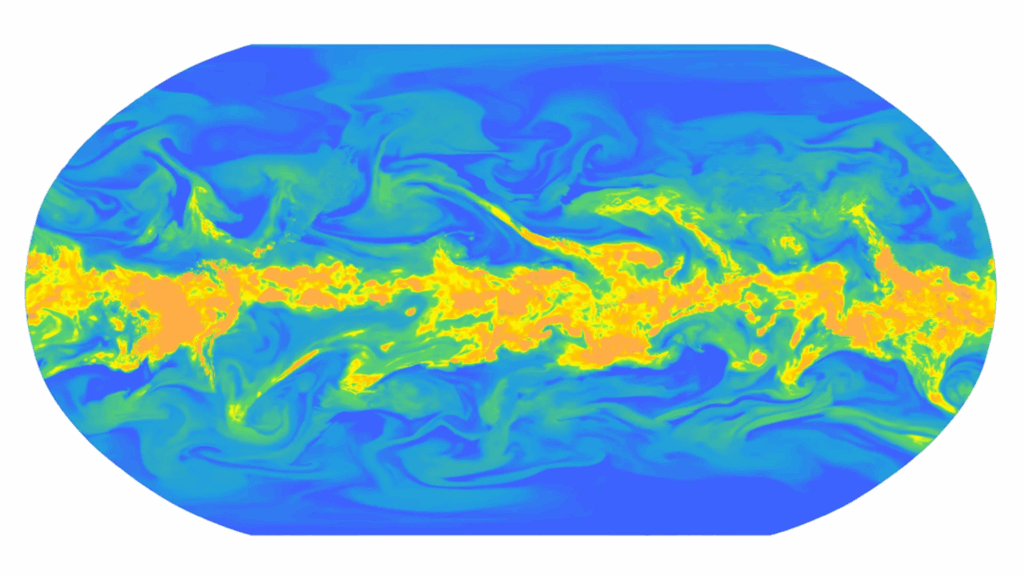- Google has launched a new AI-powered forecasting model called WeatherNext 2
- WeatherNext 2 has faster, more accurate and higher resolution predictions by simulating hundreds of possible weather outcomes in under a minute
- WeatherNext 2 now powers forecasts in Google Search, Gemini, Pixel and Maps
Google overtakes your weather forecast with artificial intelligence that thinks in probabilities. Instead of new radar towers or satellite launches, the new WeatherNext 2 AI-based forecasting model developed by Google DeepMind and Google Research delivers results up to eight times faster than traditional systems and can predict hundreds of possible weather outcomes from a single starting point at higher resolution and with better accuracy than its predecessors.
WeatherNext 2 will be integrated into many of the most popular Google platforms, including Google Search, Gemini, Pixel Weather and Maps, with a wider rollout coming soon via the Google Maps Platform Weather API.
What makes this upgrade more than just a back-end update is the scale of its ambition. WeatherNext 2 is built to account for uncertainty in unusual ways. Where older models might spit out a single most likely outcome, WeatherNext 2 can generate hundreds of potential futures, allowing forecasters and you to see a full spread of possibilities.
It also means your forecast might not just say “Rain, 40% chance” but instead show more coherent results for your afternoon ride with better insight into what could actually happen and when.
Look at
WeatherNext 2 uses what Google calls a Functional Generative Network (FGN). The model does not rely solely on ready-made weather forecasts or entire weather systems; instead, it is trained on individual, independent variables such as temperature, wind speed, and humidity. The model then works out how these variables interact to create “joints,” the complex, real-world patterns like storm fronts, heat waves, or regional wind shifts.
Google claims this architecture enables WeatherNext 2 to outperform even its own previous best-in-class model, delivering more accurate forecasts for 99.9% of variables for up to 15 days.
It is also much faster to make its predictions, completing a full forecast in under a minute. By comparison, traditional physics-based forecasting can take hours on a supercomputer. This efficiency allows for more frequent, more detailed forecast updates.
Weathering the future
After extensive testing, Google Gemini will begin displaying forecasts based on WeatherNext 2’s output, just like Google Maps. The average person could theoretically gain many benefits from the upgrade. Weather forecasting is one of the invisible systems that support an extraordinary range of decisions. Make it more precise and you remove a thousand little sources of stress from people’s days.
There are also larger consequences. For example, with smarter weather forecasts, renewable energy providers can better estimate wind and solar output, and emergency services can respond with more precision when forecasts capture uncertainty rather than mask it.
That the emphasis on uncertainty is key. Forecasting is not about being completely right, but about preparing wisely for what might happen. By offering a series of physically realistic, interconnected scenarios, WeatherNext 2 pushes forecasting toward something more strategic.
This may not solve the chaos of climate change and related natural disasters, but it can be a boon to those planning ways to better deal with them. AI-powered forecasting is starting to look like essential infrastructure.
Better data means better decisions. And for the weather, it means a lot more than just helping us decide what kind of coat to wear in the morning.
Follow TechRadar on Google News and add us as a preferred source to get our expert news, reviews and opinions in your feeds. Be sure to click the Follow button!
And of course you can too follow TechRadar on TikTok for news, reviews, video unboxings, and get regular updates from us on WhatsApp also.

The best business laptops for all budgets



